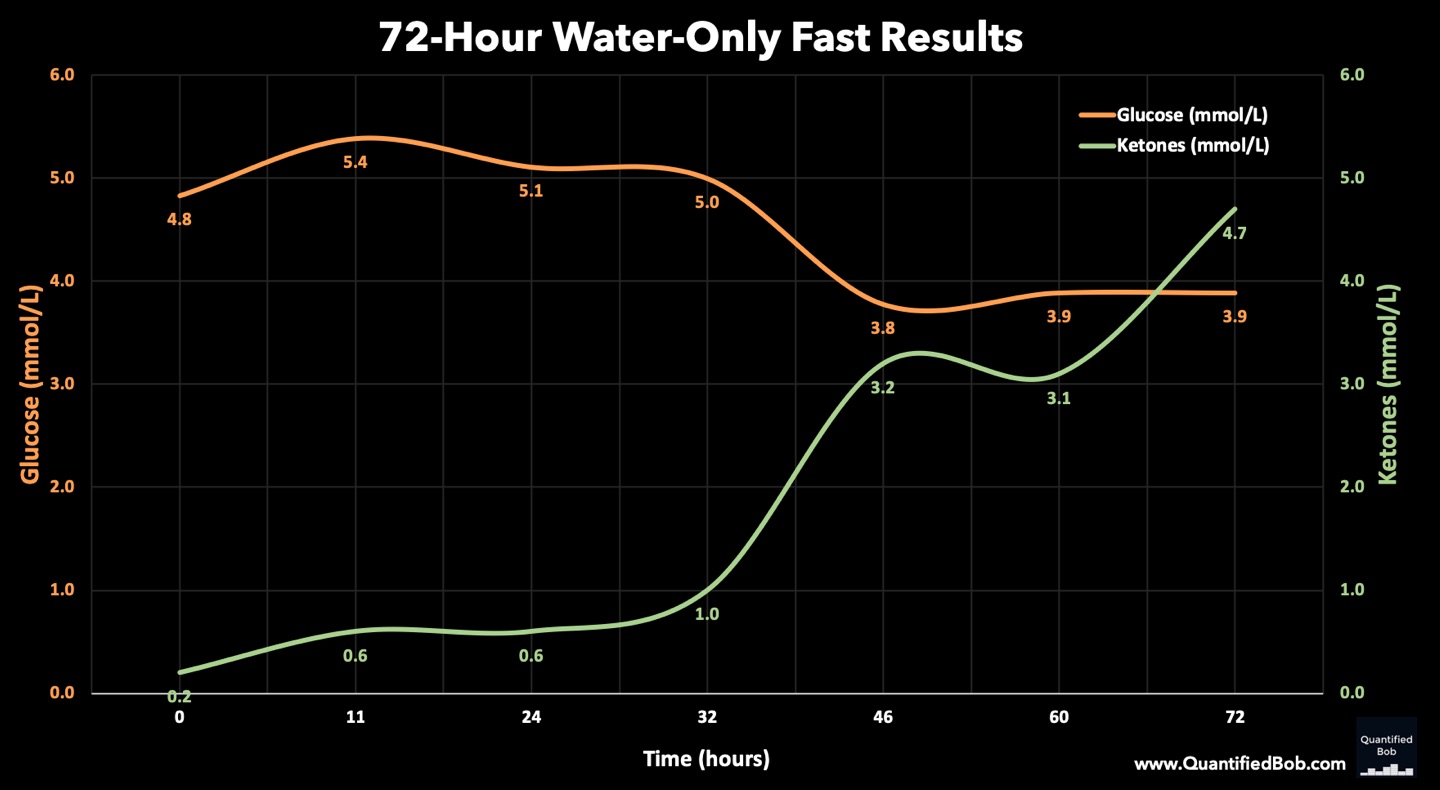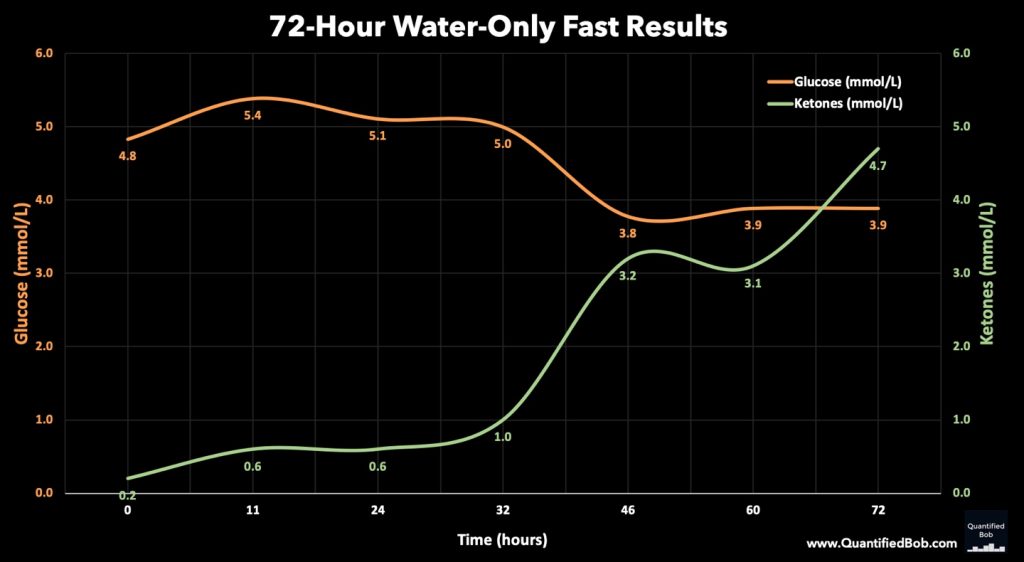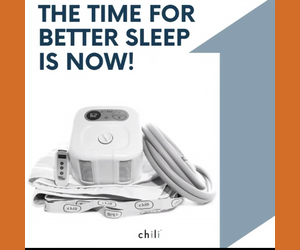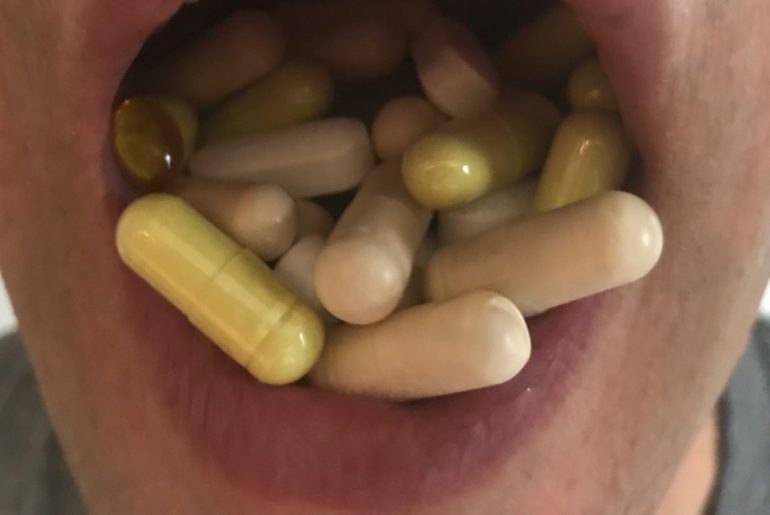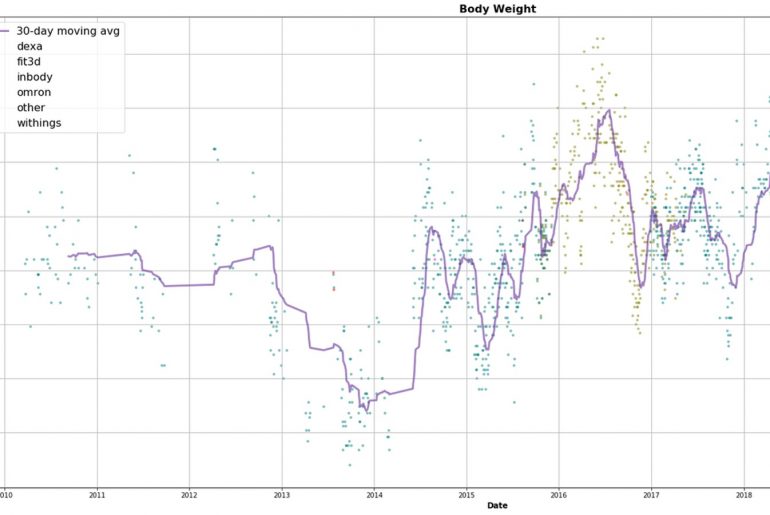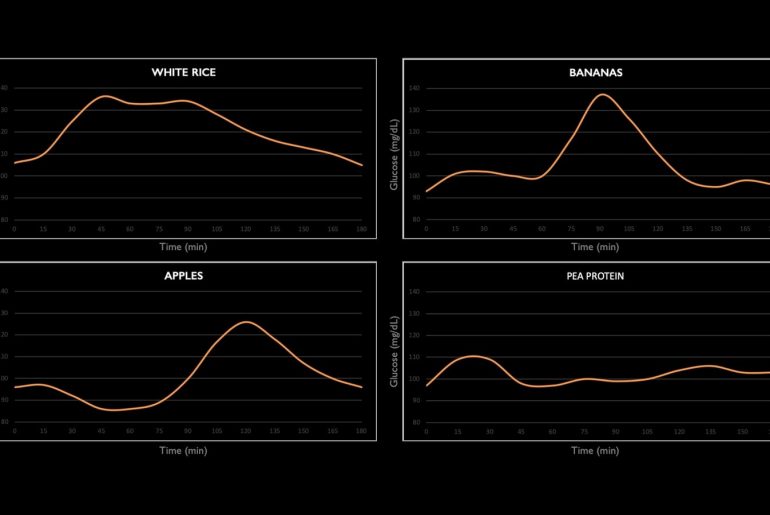Fasting can be a powerful tool in one’s wellness optimization toolkit to provide a nice metabolic reset. [1] I’ve demonstrated this in other personal experiments involving both intermittent fasting (IF) and Fasting Mimicking Diet (FMD). But what about a water fast?
While water fasting over three days (72 hours), I consumed nothing but high-quality mineral and spring water – no coffee juices, etc. (more on this below) and took morning and evening blood glucose and ketone levels each day. Here is a chart showing my results:
| Time (hours) | Glucose (mg/dL) | Glucose (mmol/L) | Ketones (mmol/L) | GKI | Weight (lb) |
| 0 | 87 | 4.8 | 0.2 | 24.2 | 168.9 |
| 11.25 | 97 | 5.4 | 0.6 | 9.0 | |
| 23.75 | 92 | 5.1 | 0.6 | 8.5 | 165.0 |
| 32.25 | 90 | 5.0 | 1.0 | 5.0 | |
| 45.92 | 68 | 3.8 | 3.2 | 1.2 | 164.4 |
| 59.58 | 70 | 3.9 | 3.1 | 1.3 | |
| 72.0 | 70 | 3.9 | 4.7 | 0.8 | 162.7 |
Over the first 2.5 days, my glucose levels gradually dropped while ketone levels increased. But then at around 36 hours, something magical happened – my ketones start to rapidly shoot up while glucose levels drop (then stabilize).
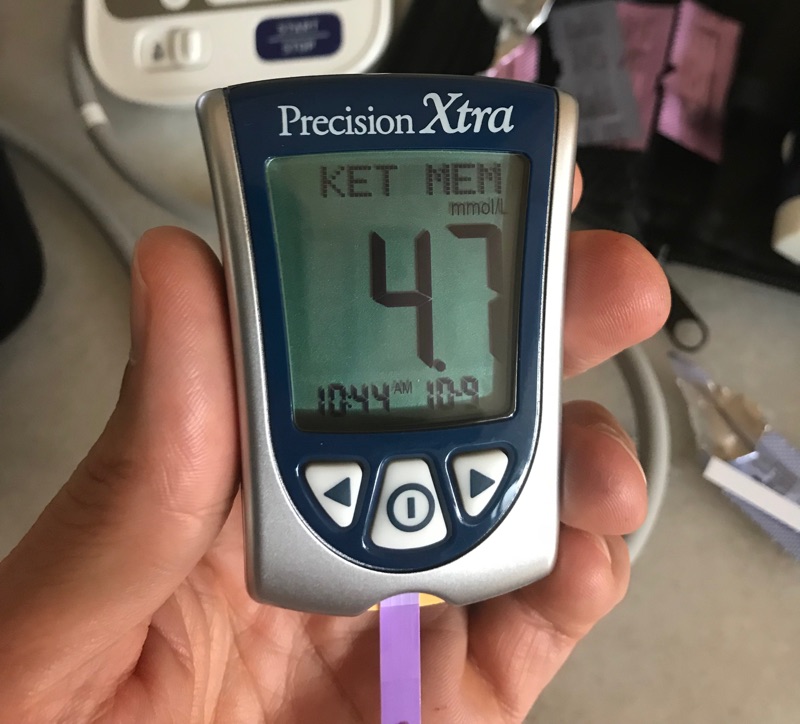
And at 72 hours my ketones were skyrocketing into “therapeutic” levels as my Glucose Ketone Index (GKI) [2] dropped below 1.0 (GKI is a way to monitor the state of your metabolic health, used in many metabolic studies on ketogenic diets, fasting, and cancer). Looking at this data, I did probably miss out on some of the therapeutic fasting benefits by not extending my fast/increasing my GKI by another day or two, so perhaps in the future I will try a 5 day water-only fast.
Weight and Body Composition
Weight loss was not a goal for me, but I lost over 6 lbs during the fast (168.9 lbs to 162.7 lbs) which I attribute to passing previously undigested food and some fat loss. My stomach definitely felt flatter and less bloated after the fast.
Water Fasting and Blood Pressure
I also tracked my blood pressure during my fast and was happy to see that my systolic blood pressure dropped almost 20 points, and my diastolic dropped by over 10 points.
Common Water Fast Questions and Tips
Here are more details about my water fast and answers to some common questions:
What to Eat Prior to a Fast
It’s a wise idea to get some adequate nutrition prior to starting a fast. This includes high protein foods (animal and/or plant based), vegetables, and fruits (which will help with hydration and provide fiber otherwise you may experience some constipation). Avoid high sodium foods, which may cause bloating.
What to Drink During a Water Fast
To ensure adequate hydration (and to maintain a sense of “fullness”), I would consume approximately 2-3 liters of high-quality mineral or spring water each day (these waters provide the added benefit of some added micronutrients). Some brands I recommend are Mountain Valley, Icelandic Glacial, and San Pellegrino, and I would mix things up throughout the day, switching brands and occasionally having some carbonated water.
Also, each morning I would consume some sea salt or pink Himalayan salt (or even better, a packet of calorie-free electrolyte powder such as LMNT) mixed with some water to help my body maintain electrolyte balance throughout the fast (important!) and provide some support to my adrenals.
Consuming Coffee or Tea During a Water Fast
Since my goal was to conduct a water-only fast, I avoided all coffee, teas, and caffeine, which also provided my body with a nice break from daily caffeine consumption. While it may be ok to consume small amounts of black coffee or green tea during a fast (typically during extended fasts where weight loss is a goal) it will surely trigger some digestive processes in the body. I don’t think it’s “wrong” or “right” to have some tea or coffee, so experiment and see what works best for you.
Exercising During a Water Fast
I used to be of the mindset to avoid any exercise while fasting because of added stress it would put on the body and risk of the body catabolizing muscle for fuel, but after digging through research from fasting experts who show some of the great benefits of training in a fasted state [3], I now incorporate some strength and cardio training during my 3-5 day fasts and have seen no negative effects. Perhaps if someone was doing a longer (5+ day) water-only fast they may want to take it a bit easier if they can’t meet the energy demands, especially towards the end of their fast.
The Best Time to Schedule a Fast
There are no “right” or “wrong” times to start or end a fast, and although my fast started and ended in the morning, a simple “cheat” would have been to start the 3-day fast in the evening (after an early dinner). That way the fasting countdown clock starts running while you are asleep! You then get to break your fast around dinner time. But before planning a huge post-fast “refeed” meal…
I did my fast over a quiet 3-day weekend (no work, social obligations, etc.), and in retrospect I would recommend scheduling when you are busy, for example, during the work week – time goes by much faster and you are less likely to think about food! Sitting at home during the weekend watching football (and lots of food and beverage commercials) can be mentally painful.
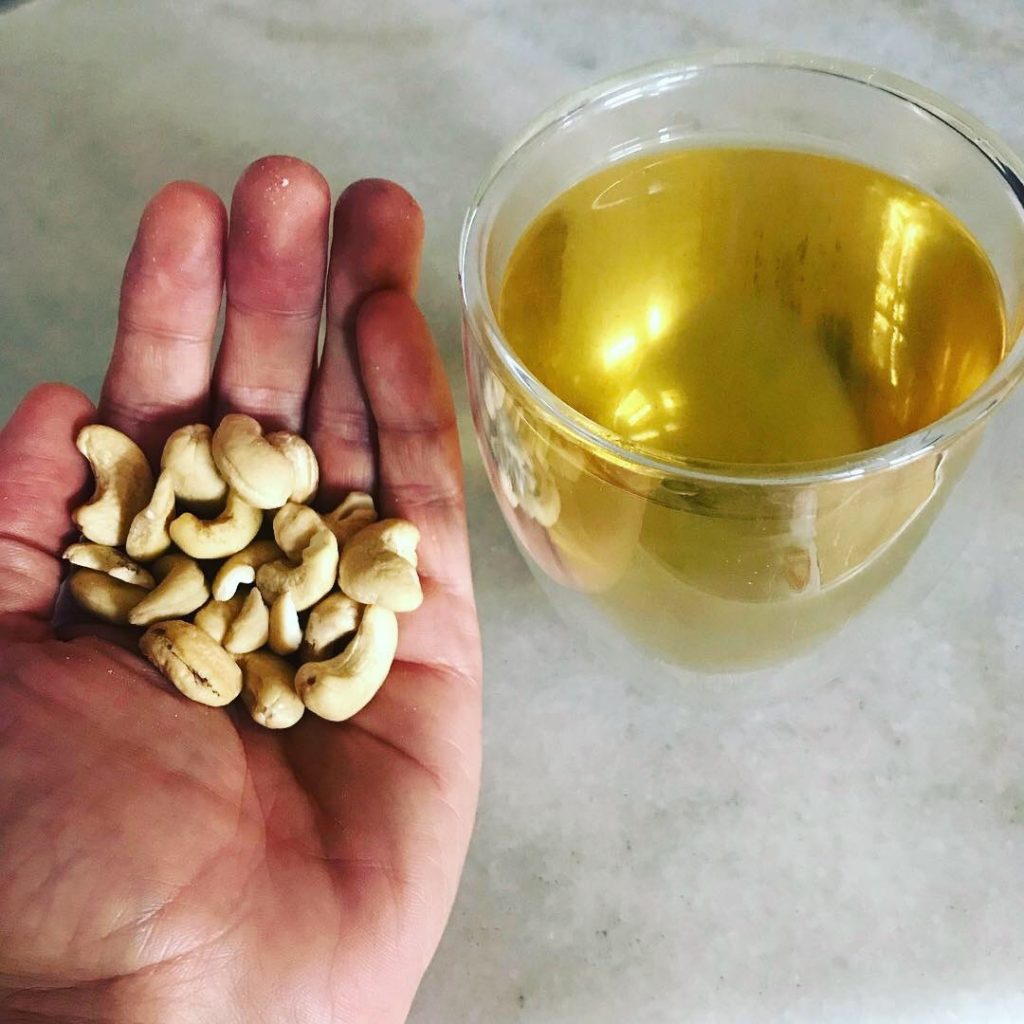
How to Break a Fast
As you prepare to break your fast, you may be planning a huge “refeed” meal. However, your digestive system needs some time to return to normal function. If you were to break your fast with a huge (especially animal protein-based) meal, you may be in for a world of digestive pain. I recommend slowly easing back into things by consuming some low-fiber foods that are gentle on the stomach:
- Break your fast with something light and easy to digest – a small cup of bone or vegetable broth or green tea and a few nuts such as cashews
- An hour later have some eggs, yogurt, greens powder, or bit of avocado
- 2-3 hours later, go ahead and have a regular meal (for example, animal proteins, fiber)
What’s Next?
I love how I feel after doing an occasional fast, and will continue to incorporate fasting into my wellness regimen – doing quarterly water-only fasts in addition to daily intermittent fasting and the occasional 5-day Fasting Mimicking Diet. My advice is to start simple – try a basic 18- to 24-hour fast and work your way up from there. Doing it with friends or a peer group also makes the experience much easier. Good luck!
Resources
Blood Glucose and Ketone Meters:
Precision Xtra Blood Glucose and Ketone Meter
Keto-Mojo Ketone and Glucose Meter
Quality Spring and Mineral Waters:
Mountain Valley Spring Water
Icelandic Glacial Natural Spring Water
Electrolytes:
LMNT Keto Electrolyte Powder Packets
Maldon Sea Salt

